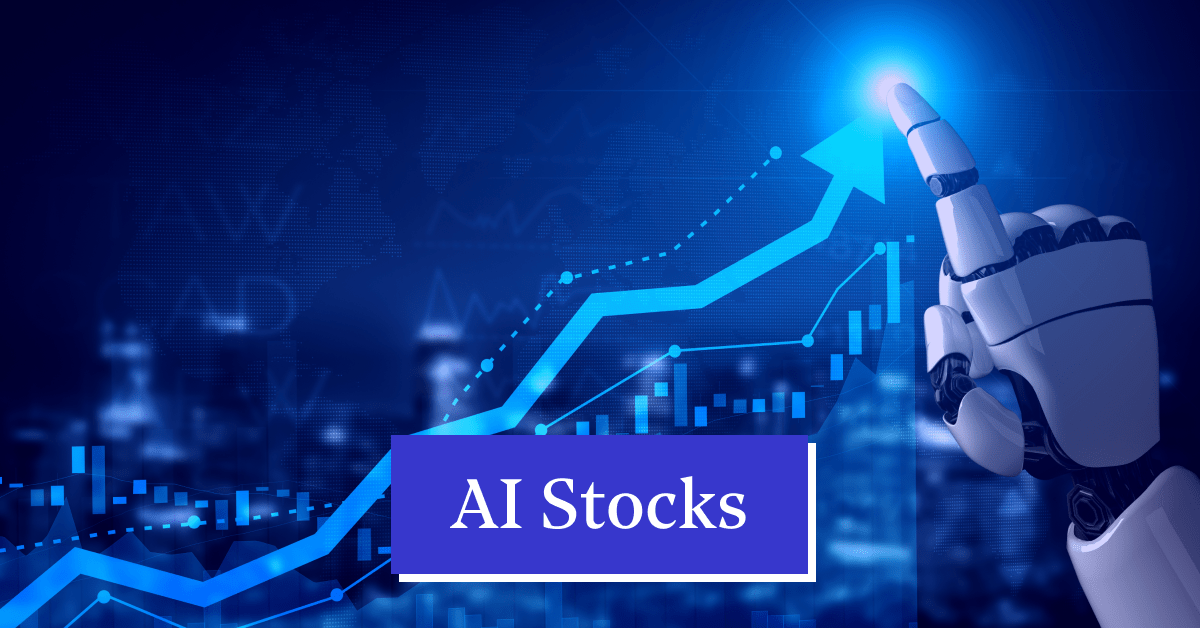To provide accurate and reliable information, it's important to check the data and sources that are utilized by AI stock prediction and trading platforms. Insufficient quality data can lead to flawed predictions, financial losses, and distrust on the platform. Here are 10 top tips for evaluating sources and the quality of the data:
1. Verify Data Sources
Check the origin of the data: Make sure the data source is trustworthy and well-known data providers (e.g., Bloomberg, Reuters, Morningstar, or exchanges like NYSE, NASDAQ).
Transparency. The platform must publicly disclose the sources of data it uses and should update these regularly.
Do not rely on one source: reliable platforms will typically combine data from multiple sources to lessen the chance of bias.
2. Examine the freshness of data
Real-time data vs. delayed data: Find out if your platform offers delayed or real-time data. Real-time trading demands real-time data. Delayed data is enough for long-term analysis.
Make sure you are aware of the frequency at which you update information (e.g. hourly, minute by minute or even daily).
Historical data accuracy - Make sure that all historical data is constant and do not have gaps or anomalies.
3. Evaluate Data Completeness
Check for missing data: Search for gaps in historical data as well as tickers that are not working or incomplete financial statements.
Coverage - Ensure that the platform you select covers all the stocks, indices and other markets that are relevant to trading strategy.
Corporate actions: Check if the platform accounts for stock splits, dividends, mergers as well as other corporate actions.
4. Accuracy of Test Data
Cross-verify your data: Check the data of your platform against other reliable sources.
Error detection: Watch out for price errors, mismatched financial metrics or unusual outliers.
Backtesting. You can backtest strategies with historical data and then compare the results with what you would expect.
5. Measure Data Granularity
Level of detail: Ensure the platform provides granular data like intraday prices, volume spreads, bid-ask spreads and order book depth.
Financial metrics - Check to see if there are detailed financial statement (income statements, balance sheets, cash flows) and key ratios (P/E/P/B/ROE etc.). ).
6. Verify that the Data is Clean and Preprocessing
Normalization of data: Make sure the platform normalizes data (e.g. and adjusting for dividends, splits) to maintain consistency.
Outlier handling: Examine the way in which the platform deals with outliers and anomalies in the data.
Missing estimation of data: Ensure that the system relies on reliable methods for filling the gaps in data.
7. Verify the data's consistency
Timezone alignment align data in accordance with the same timezone in order to prevent discrepancies.
Format consistency: Make sure your data is presented in a consistent manner.
Cross-market consistency: Make sure that the data of different exchanges or markets are harmonized.
8. Assess Data Relevance
Relevance to your strategy for trading The data you are using is compatible with your style of trading (e.g. technical analysis or qualitative modeling and fundamental analysis).
Features selection: Check that the platform offers relevant features to enhance the accuracy of your predictions (e.g. sentiment analysis macroeconomic indicator, news data).
Examine data security and integrity
Data encryption: Make sure the platform uses encryption to protect information during storage and transmission.
Tamper-proofing (proof against alteration) Verify to be sure that the data has not been altered or altered by the system.
Conformity: Ensure that the platform you are using is compliant with any laws governing data protection (e.g. GDPR, CPA, etc.).
10. Transparency of the AI Model of the Platform is evaluated
Explainability. You must be aware of how the AI uses data to make predictions.
Check for bias detection. The platform should actively examine and reduce any biases that may exist in the model or data.
Performance metrics - Evaluate the performance of the platform and performance indicators (e.g. precision, accuracy, precision and recall) to assess the validity of their predictions.
Bonus Tips
Reviews and reputation of users - Research feedback from users and reviews to determine the reliability of the platform and the data quality.
Trial period. You can use the trial period to test the features and data quality of your platform prior to deciding to decide to purchase.
Customer support - Make sure that the platform you choose to use is able to provide robust customer support in order to solve any data-related issues.
Following these tips will enable you to analyze the data quality, the sources, and the accuracy of AI-based stock prediction tools. Follow the best ai stock market examples for website recommendations including chart analysis ai, ai investment advisor, ai stock trading bot free, ai trader, ai stock price prediction, using ai to trade stocks, ai stock price prediction, stock analysis app, incite ai, ai for trading and more.

Top 10 Ways To Evaluate The Speed And Latency Ai Analysis And Stock Prediction Platform
Speed and latency are important elements when it comes to looking at AI stock predicting/analyzing trading platforms, particularly for active traders, algorithmic traders, and high-frequency traders. Milliseconds delay could be detrimental to trading execution. Below are the top ten strategies for evaluating the speed and latency of these platforms:
1. Real-time Data Feeds for Evaluation
Speed of data delivery Make sure the platform delivers live data (e.g. sub-millisecond delay).
Nearness of the data source: To cut down the amount of time required to transfer data, make sure whether your server's servers are able to be located near major exchanges.
Data compression: Determine if the platform is using efficient data compression to speed up data delivery.
2. Speed of execution test for trades
Processing time for orders: This is the duration it takes for the platform to process and complete trades once you have submitted an order.
Direct Market Access (DMA) - Ensure that the platform supports DMA. This lets orders go directly to the exchange without the necessity for intermediaries.
Execution Reports: Make sure that your platform has specific reports on the execution of orders, with timestamps.
3. Examine the Platform's Responsiveness
User interface (UI, or user interface speed): This is a measure of how quickly the UI of a platform responds to inputs you enter (e.g. clicking buttons or loading graphs).
Chart updates: Check whether charts and visualizations are updated in real-time, without delay.
Performance of mobile apps When you are using a mobile application, ensure it performs just as fast as a desktop version.
4. Verify that the infrastructure is low-latency.
Server Locations: Ensure that the platform has servers that have low latency, located close to major financial exchanges or hubs.
Co-location: If the exchange offers co-location, you are able to place your trading algorithm on servers near the exchange.
High-speed networks: Check if the platform is running fiber optic networks with high-speed speeds or technology with low latency.
5. Evaluation of Backtesting and Simulation speed
Check the speed at which your platform can process and analyze the historical data.
Simulation latency: Make sure the platform simulates trades in real time without any noticeable delay.
Parallel processing (or distributed computing) Find out what platforms use the concept of parallel processing or distributed processing in order to accelerate complex calculations.
6. Measure API Latency
API response time: Determine how quickly the platform's API responds to requests (e.g. getting market data, placing orders).
Rate limits: Verify whether the API has reasonable rate limits to prevent delay during high-frequency trading.
WebSocket Support: Verify if the platform supports WebSocket protocols to stream data in real-time and at a low latency.
7. Test the stability of your platform using Load
High-volume Trading: Play with high quantities of trading scenarios in order to see if the platform is reliable and stable.
Market volatility: Test the platform in times of high volatility in order to determine if it is able to cope with rapid price adjustments.
Find out what tools are available for testing strategies in extreme situations.
8. Examine network and connectivity
Internet speed demands. Make sure that your connection speed is sufficient to match the recommended speed of your platform for optimal performance.
Make sure there aren't any redundant connections.
VPN latency: When you use the VPN platform, verify whether the latency is substantial and if you have alternatives.
9. Check for Speed-Optimization Features
Pre-trade Analyses: Make sure that the platform has pre-trade analyis to optimize execution speed and order processing.
Smart order routing (SOR): Verify if the platform uses SOR to identify the fastest and most cost-effective execution locations.
Monitoring latency: Find out whether the platform provides tools for monitoring and analyzing the speed of latency in real time.
Review User Feedback Benchmarks
Feedback from users: Use reviews from users to assess the performance of the platform with regard to speed and latency.
Benchmarks from third-party sources Check out independent reviews or benchmarks that compare the speed of the platform to that of its competitors.
Case studies: Check whether the platform has case studies or testimonials, that highlight its ability to work with low-latency.
Bonus Tips:
Trial period: You are able to make use of a demo or trial period to test the performance of the platform and its latency.
Customer support: Check to see if the platform provides support for latency issues or for optimization.
Hardware requirements: Find out if you need specific hardware for optimal performance (e.g. high-performance computers).
If you follow these guidelines, you can effectively assess the speed and latency of AI platform for predicting or analyzing stocks and ensure that you select a platform that meets the requirements of your trading and eliminates delays. Trading platforms with low latency are crucial for high-frequency algorithmic traders. small delays could negatively affect their earnings. View the recommended copyright ai trading bot tips for site tips including best ai trading software, ai trade, ai trading platform, invest ai, ai stock trading bot free, ai invest, ai trading bot, trader ai app, chart ai trading, trading chart ai and more.
